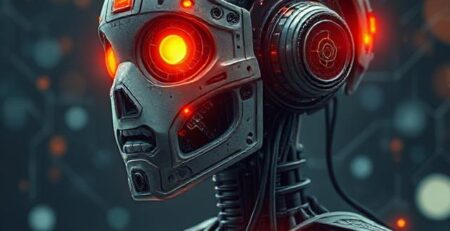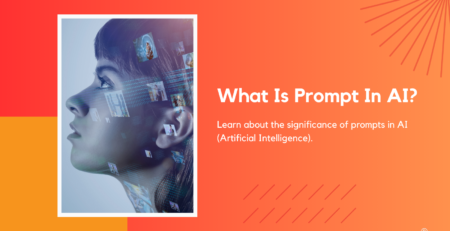The Revolutionary Week in AI: Latest Breakthroughs and Game-Changing Tools Transforming Digital Innovation
The artificial intelligence landscape has experienced unprecedented acceleration in July 2025, with major technology companies unveiling groundbreaking innovations that promise to reshape how we interact with digital systems. From autonomous AI agents to revolutionary motion capture technology, this week has delivered game-changing developments that signal a new era in artificial intelligence capabilities.
ChatGPT Agents: The Dawn of Autonomous AI Assistants
The most significant announcement came from OpenAI’s introduction of ChatGPT Agents, a revolutionary feature that transforms the popular chatbot from a conversational tool into an autonomous task executor. ChatGPT now thinks and acts, proactively choosing from a toolbox of agentic skills to complete tasks for you using its own computer.
Understanding ChatGPT Agent Capabilities
The new Agent feature, now available to ChatGPT Plus, Pro and Team users, allows the AI to perform real tasks on your behalf using a virtual computer inside your browser. This represents a fundamental shift from traditional AI assistants that merely respond to queries, toward truly autonomous systems capable of executing complex workflows.
The ChatGPT Agent leverages advanced reasoning capabilities to break down complex tasks into manageable steps. ChatGPT agent allows ChatGPT to complete complex online tasks on your behalf. It seamlessly switches between reasoning and action—conducting in-depth research across public websites, uploaded files, and connected third-party sources.
Key Features and Functionalities
The ChatGPT agent is in the same family as o3. It combines several existing ChatGPT features, and it can do things like research and generate reports, execute code using Terminal, generate slides and spreadsheets, and connect to external data sources and applications.
The agent’s capabilities extend beyond simple task execution to include:
- Advanced Research Capabilities: The system can conduct comprehensive research across multiple sources, analyzing data from websites, documents, and third-party applications.
- Code Execution: Direct terminal access allows the agent to run code, install packages, and manage development environments.
- Document Generation: Automated creation of presentations, spreadsheets, and reports based on research findings.
- Application Integration: Seamless connectivity with external tools and services to create comprehensive workflows.
Security Considerations and Limitations
While the technology represents a significant advancement, OpenAI has implemented careful security measures. OpenAI says bad actors could use the feature in ChatGPT agent to exfiltrate sensitive data through prompt injection attacks. The company has taken a cautious approach to deployment, ensuring robust safeguards against potential misuse.
Runway’s Act-Two: Revolutionizing Motion Capture Technology
Runway ML has unveiled Act-Two, a groundbreaking AI model that transforms motion capture technology for creative professionals. Launched on July 16, 2025, Act-Two introduces groundbreaking advancements in head, face, body, and hand tracking, offering creators an intuitive and powerful tool to bring their visions to life.
Advanced Motion Capture Capabilities
The Act-Two model represents a significant leap forward in motion capture technology, offering unprecedented precision and accessibility. A look at Runway’s Act-Two motion capture model and its improved generation quality and support for head, face, body, and hand tracking.
Traditional motion capture systems require expensive equipment and specialized studios. Act-Two democratizes this technology by providing high-quality motion capture capabilities through AI-powered analysis of standard video footage. This innovation opens new possibilities for content creators, filmmakers, and animators who previously couldn’t access professional motion capture technology.
Impact on Creative Industries
The introduction of Act-Two has significant implications for various creative sectors:
- Film and Animation: Independent filmmakers can now incorporate professional-grade motion capture into their projects without substantial budget investments.
- Game Development: Smaller development teams can create realistic character animations that compete with major studio productions.
- Content Creation: Social media creators and YouTubers can enhance their content with sophisticated motion capture effects.
- Education and Training: Academic institutions can provide students with hands-on experience using cutting-edge motion capture technology.
Grok AI Companions: Personalized AI Interactions
X.AI’s Grok platform has introduced AI Companions, marking a new direction in personalized artificial intelligence interactions. Update your app to try out @Grok … seems that there are at least two available AI companions: Ani, an anime girl in a tight corset and short black dress with thigh-high fishnets, and Bad Rudy, a 3D fox creature.
The Evolution of AI Personality
The Grok AI Companions represent an attempt to create more engaging and personalized AI interactions. Unlike traditional chatbots that maintain a neutral persona, these companions are designed with distinct personalities, visual representations, and conversational styles. This approach aims to create more emotionally engaging experiences for users.
Implications for AI Development
The introduction of AI companions raises important questions about the future of human-AI interaction. While these developments offer new possibilities for entertainment and engagement, they also highlight the need for careful consideration of ethical implications and user well-being.
Amazon’s Kiro: Transforming Software Development
Amazon has entered the AI-powered development space with Kiro, a revolutionary coding assistant designed to streamline software development processes. Amazon has launched Kiro, a new AI software development tool that uses autonomous agents to generate and maintain project plans, specs, and code documentation.
Spec-Driven Development Approach
Amazon Web Services (AWS) has entered this competitive landscape with Kiro, an AI-powered Integrated Development Environment (IDE) launched in preview on July 14, 2025. Pronounced “keer-oh,” Kiro introduces a novel approach called “spec-driven development,” aiming to transform how developers approach software creation.
The spec-driven development methodology represents a paradigm shift in software engineering. Rather than starting with code, developers begin with comprehensive specifications that Kiro uses to generate implementation plans, documentation, and initial code structures. This approach promises to improve code quality, reduce development time, and enhance team collaboration.
Competitive Landscape
Amazon Web Services has an answer to trendy tools for vibe coding, such as Cursor and Windsurf. Kiro enters a competitive market where numerous AI coding assistants are vying for developer attention. The tool’s integration with AWS services and enterprise-focused features position it as a serious contender in the professional development market.
Mistral’s Voxtral: Open-Source Audio Intelligence
French AI company Mistral has released Voxtral, its first open-source audio model, challenging established players in the speech recognition and audio processing space. French startup Mistral has jumped into the audio race with Voxtral, its first open model, aiming to challenge the dominance of walled-off corporate systems with open-weight alternatives.
Open-Source Audio Innovation
Introducing frontier open source speech understanding models. Voxtral represents Mistral’s commitment to open-source AI development, providing developers and researchers with access to state-of-the-art audio processing capabilities without the restrictions of proprietary systems.
The model offers several advantages over closed-source alternatives:
- Transparency: Full model architecture and training details are available for scrutiny and improvement.
- Customization: Developers can modify and fine-tune the model for specific use cases.
- Cost-Effectiveness: No licensing fees or usage restrictions typical of proprietary solutions.
- Community Development: Open-source nature encourages collaborative improvement and innovation.
Market Impact and Future Implications
Mistral’s VoxTral release sets a new bar for open‑source AI. Expect a surge in community‑led model improvements, forks, and integrated toolkits. Proprietary vendors will need to justify premium pricing through unique features or vertical optimizations.
The release of Voxtral signals a broader trend toward open-source AI development, potentially disrupting the dominance of proprietary systems from major technology companies. This democratization of advanced AI capabilities could accelerate innovation and reduce barriers to entry for smaller organizations and independent developers.
The Broader AI Ecosystem Evolution
Integration and Interoperability
The simultaneous release of these diverse AI tools highlights the growing importance of integration and interoperability in the AI ecosystem. Modern AI applications increasingly require multiple specialized models working together, from language processing to motion capture to audio analysis.
Democratization of AI Technology
A common thread among these developments is the democratization of previously exclusive AI capabilities. Whether through open-source models like Voxtral or user-friendly tools like Runway’s Act-Two, advanced AI technologies are becoming more accessible to broader audiences.
Security and Ethical Considerations
As AI systems become more autonomous and capable, security and ethical considerations become paramount. The cautious approach taken by companies like OpenAI demonstrates the industry’s growing awareness of potential risks and the need for responsible development practices.
Industry Implications and Future Outlook
Professional Services Transformation
These AI developments are poised to transform numerous professional services sectors:
- Creative Industries: Motion capture, video production, and content creation will become more accessible and cost-effective.
- Software Development: AI-assisted coding tools will accelerate development cycles and improve code quality.
- Customer Service: AI companions and agents will enable more personalized and efficient customer interactions.
- Research and Analysis: Autonomous research capabilities will transform how organizations gather and analyze information.
Economic Impact
The widespread adoption of these AI tools could have significant economic implications. While they promise increased productivity and efficiency, they also raise questions about job displacement and the need for workforce retraining. Organizations must balance the benefits of AI adoption with considerations for their human workforce.
Technological Convergence
The convergence of multiple AI capabilities—language processing, computer vision, audio analysis, and autonomous action—suggests we’re approaching a new phase of artificial intelligence development. This convergence enables more sophisticated and versatile AI systems that can handle complex, multi-modal tasks.
Challenges and Considerations
Technical Challenges
Despite these impressive advances, significant technical challenges remain:
- Reliability: Ensuring AI systems perform consistently across diverse scenarios and edge cases.
- Scalability: Managing computational requirements as AI systems become more complex and capable.
- Integration: Seamlessly combining multiple AI capabilities into cohesive, user-friendly systems.
Regulatory and Compliance Issues
The rapid advancement of AI capabilities outpaces regulatory frameworks, creating uncertainty for businesses and developers. Organizations must navigate evolving compliance requirements while innovating with new AI technologies.
Ethical Implications
The development of AI companions and autonomous agents raises important ethical questions about the nature of human-AI relationships and the potential for manipulation or dependency. The industry must carefully consider these implications as technology advances.
Conclusion: The Future of AI Innovation
The remarkable developments in AI technology during July 2025 represent more than incremental improvements—they signal a fundamental shift toward more autonomous, capable, and accessible artificial intelligence systems. From ChatGPT Agents that can execute complex tasks independently to Runway’s Act-Two democratizing professional motion capture, these innovations are reshaping the technological landscape.
The trend toward open-source development, exemplified by Mistral’s Voxtral, suggests a future where advanced AI capabilities are more widely distributed and accessible. This democratization of AI technology could accelerate innovation and create new opportunities for businesses and individuals alike.
However, these advances also highlight the need for careful consideration of security, ethics, and societal impact. As AI systems become more autonomous and integrated into daily life, the responsible development and deployment of these technologies becomes increasingly important.
The convergence of multiple AI capabilities—language processing, computer vision, audio analysis, and autonomous action—suggests we’re entering a new era of artificial intelligence. This convergence enables more sophisticated applications that can handle complex, real-world tasks across multiple domains.
For businesses and individuals looking to leverage these technologies, the key will be staying informed about developments, understanding the capabilities and limitations of different tools, and implementing them thoughtfully with consideration for both opportunities and risks. The AI revolution is not just about technology—it’s about reimagining how we work, create, and interact with digital systems.
As we move forward, the successful adoption of these AI innovations will depend on our ability to balance technological advancement with human values, ensuring that artificial intelligence serves to enhance rather than replace human capabilities and creativity. The future of AI is not just about building more powerful systems—it’s about creating technologies that empower people to achieve more than they ever thought possible.
This article covers the latest AI developments and breakthroughs from July 2025, providing comprehensive analysis of ChatGPT Agents, Runway Act-Two, Grok AI Companions, Amazon Kiro, and Mistral Voxtral. Stay updated with the rapidly evolving AI landscape and discover how these innovations are transforming technology and business.











